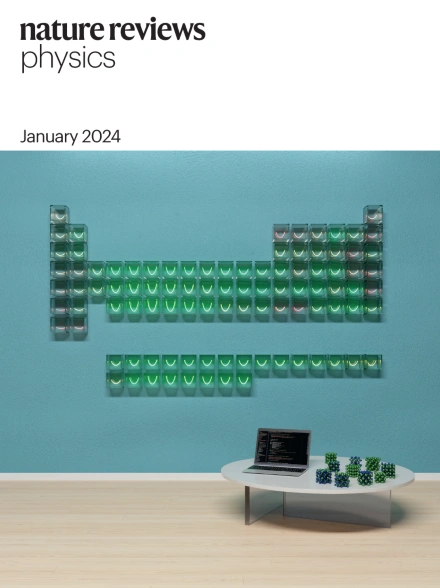低维水的结构与流动
IF 39.5
1区 物理与天体物理
Q1 PHYSICS, APPLIED
引用次数: 0
摘要
当水流经一维或二维通道时,其行为大大偏离了公认的流体动力学原理。这是因为减少任何相互作用的物理系统的维数会放大传统流体动力学方程无法达到的相互作用效应。在低维的水中,氢键可以变得足够稳定,使水分子排列成有序状态,使水不仅表现得像液体,而且在某些方面也表现得像固体。在这篇综述中,我们探讨了水的分子顺序与其在低维通道中流动的能力之间的关系,以散装水、蒸汽和冰的粘度为基准。我们还简要概述了可用于此类分析的关键理论方法,并讨论了受水分子结构严重影响的离子传输。低维水传输和离子耦合结构特征之间的动态相互作用是埃级仿生和神经形态通道设计和研究的最新进展的核心。在降维条件下,水的结构和粘度发生了显著变化。这篇综述探讨了粘度如何依赖于约束的维度(1D或2D),并研究了几何约束和离子约束之间的相互作用,在埃尺度的水渠中形成输运性质。本文章由计算机程序翻译,如有差异,请以英文原文为准。

Structure and flow of low-dimensional water
When water flows through 1D or 2D channels, its behaviour deviates substantially from the well-established principles of hydrodynamics. This is because reducing the dimensionality of any interacting physical system amplifies interaction effects that are beyond the reach of traditional hydrodynamic equations. In low-dimensional water, hydrogen bonds can become stable enough to arrange water molecules into an ordered state, causing water to behave not only like a liquid but also like a solid in certain respects. In this Review, we explore the relationship between the molecular ordering of water and its ability to flow in low-dimensional channels, using viscosities of bulk water, vapour, and ice as benchmarks. We also provide a brief overview of the key theoretical approaches available for such analyses and discuss ionic transport, which is heavily influenced by the molecular structure of water. The dynamic interaction between low-dimensional water transport and ion-coupled structural features lies at the heart of recent advances in the design and investigation of angstrom-scale biomimetic and neuromorphic channels. Water’s structure and viscosity change markedly under reduced dimensionality. This Review explores how viscosity depends on the dimensionality of confinement (1D or 2D) and examines the interplay between geometric and ionic constraints in shaping transport properties within angstrom-scale water channels.
求助全文
通过发布文献求助,成功后即可免费获取论文全文。
去求助
来源期刊

Nature Reviews Physics
Multiple-
CiteScore
47.80
自引率
0.50%
发文量
122
期刊介绍:
Nature Reviews Physics is an online-only reviews journal, part of the Nature Reviews portfolio of journals. It publishes high-quality technical reference, review, and commentary articles in all areas of fundamental and applied physics. The journal offers a range of content types, including Reviews, Perspectives, Roadmaps, Technical Reviews, Expert Recommendations, Comments, Editorials, Research Highlights, Features, and News & Views, which cover significant advances in the field and topical issues. Nature Reviews Physics is published monthly from January 2019 and does not have external, academic editors. Instead, all editorial decisions are made by a dedicated team of full-time professional editors.
 求助内容:
求助内容: 应助结果提醒方式:
应助结果提醒方式:


